Welcome to the Germany Portal!
Willkommen im Deutschland-Portal!
 |
 |
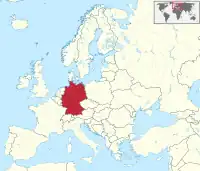 | |
Germany (German: Deutschland), officially the Federal Republic of Germany, is a country in Central and Western Europe, lying between the Baltic and North Seas to the north and the Alps to the south. It borders Denmark to the north, Poland and the Czech Republic to the east, Austria and Switzerland to the south, France to the southwest, and Luxembourg, Belgium and the Netherlands to the west.
Germany includes 16 constituent states, covers an area of 357,578 square kilometres (138,062 sq mi) and has a largely temperate seasonal climate. With 83 million inhabitants, it is the second most populous state of Europe after Russia, the most populous state lying entirely in Europe, as well as the most populous member state of the European Union. Germany is a very decentralized country. Its capital and largest metropolis is Berlin, while Frankfurt serves as its financial capital and has the country's busiest airport.
In 1871, Germany became a nation-state when most of the German states unified into the Prussian-dominated German Empire. After World War I and the Revolution of 1918–19, the empire was replaced by the parliamentary Weimar Republic. The Nazi seizure of power in 1933 led to World War II, and the Holocaust. After the end of World War II in Europe and a period of Allied occupation, two new German states were founded: West Germany, formed from the American, British, and French occupation zones, and East Germany, formed from the western part of the Soviet occupation zone, reduced by the newly established Oder-Neisse line. Following the Revolutions of 1989 that ended communist rule in Central and Eastern Europe, the country was reunified on 3 October 1990.
Today, Germany is a federal parliamentary republic led by a chancellor. It is a great power with a strong economy. The Federal Republic of Germany was a founding member of the European Economic Community in 1957 and the European Union in 1993. Read more...
Selected article

SMS Hindenburg was a battlecruiser of the German Kaiserliche Marine (Imperial Navy), the third ship of the Derfflinger class, built to a slightly modified design. She carried the same battery of eight 30.5 cm (12 in) guns, but in improved turrets that allowed them to fire further. The ship was also slightly larger and faster than her two sister ships. She was named in honor of Field Marshal Paul von Hindenburg, the victor of the Battle of Tannenberg and the Battle of the Masurian Lakes, as well as Supreme Commander of the German armies from 1916. The ship was the last capital ship of any type built for the German navy during World War I.
Hindenburg was commissioned late in the war and as a result had a brief service career. The ship took part in a handful of short fleet operations as the flagship of I Scouting Group in 1917–18, though saw no major action. The proposed final sortie of the fleet in the last weeks of the war came to nothing when the crews of the capital ships mutinied. Hindenburg was subsequently interned with the rest of the German battlecruisers at Scapa Flow in November 1918. Rear Admiral Ludwig von Reuter ordered the ships be scuttled on 21 June 1919. Hindenburg was the last of the ships to sink. She was raised in 1930 and broken up for scrap over the following two years. (Full article...)
Selected picture
Related portals
- Parent portals
- Regional
 Eifel
Eifel Rhön
Rhön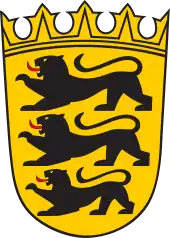 Baden-Württemberg
Baden-Württemberg Bavaria
Bavaria Berlin
Berlin Brandenburg
Brandenburg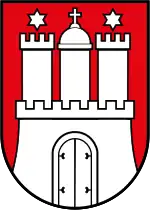 Hamburg
Hamburg Lower Saxony
Lower Saxony.svg.png.webp) Mecklenburg-Vorpommern
Mecklenburg-Vorpommern Ore Mountains
Ore Mountains North Rhine-Westphalia
North Rhine-Westphalia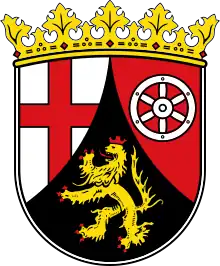 Rhineland-Palatinate
Rhineland-Palatinate Saxony
Saxony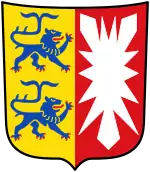 Schleswig-Holstein
Schleswig-Holstein
- History
 Holy Roman Empire (900–1806)
Holy Roman Empire (900–1806).svg.png.webp) German Empire (1871–1918)
German Empire (1871–1918) East Germany (1949–1990)
East Germany (1949–1990)
- Other
- Neighbouring countries
Anniversaries for January 15

- 1807 – Birth of zoologist and entomologist Hermann Burmeister
- 1863 – Birth of politician Wilhelm Marx, Chancellor of the Weimar Republic
- 1919 – Revolutionaries Karl Liebknecht and Rosa Luxemburg are murdered by Freikorps soldiers
Did you know...

- ... that Wie liegt die Stadt so wüst (How Deserted Lies the City), a motet composed by Rudolf Mauersberger after the bombing of Dresden, was first performed in the destroyed Kreuzkirche (pictured)?
- ... that Kihwan Sim from South Korea appeared as Mozart's Figaro at the Oper Frankfurt in the first production with the new music director, acting with a hint at the French Revolution?
- ... that the new Catalogue of Works of Carl Friedrich Abel (title image pictured), listing 420 compositions, was introduced at a festival celebrating Abel's tercentenary in Köthen?
- ... that the leader of the German Red Cross under the Nazi regime had lived in the UK until he was fifteen years old and was a grandson of Queen Victoria?
- ... that during World War II, a Polish priest and a German officer could not prevent the massacre of 257 inhabitants of a Polish village?
- ... that teacher Mary Creighton Bailey was awarded the Order of Merit of the Federal Republic of Germany for her services in the improvement of education in Germany shortly after World War II?
- ... that Nizza in central Frankfurt is one of the largest gardens of Mediterranean plants north of the Alps, thanks to its very warm microclimate?
- ... that by digging a trench through Hisarlik, Heinrich Schliemann destroyed parts of the ruins of Troy?
Selected cuisines, dishes and foods

Due to its centuries-old history as a major port town the cuisine of Hamburg is very diversified and sapid as ingredients’ supply was safe. Until the 20th century the cuisine of Hamburg was predominantly characterized by the extensive choice of different kinds of fish from the river Elbe and the nearby Baltic Sea. The region of Vierlande supplied Hamburg with fresh vegetables. Fruit came from the area Altes Land and until industrialization the neighbourhood of Wilhelmsburg was considered the ‘milk isle’ of Hamburg. International trade in the Port of Hamburg made spices and exotic nutrition items from India and South America available since the 16th century which were soon incorporated into civic kitchens.
On this basis the cuisine of Hamburg developed which regrettably lost some of its characteristics nowadays due to the supraregional harmonization of the North German cuisine. But due to its high economic importance Hamburg does feature many internationally recognized gourmet restaurants from which 11 were repeatedly awarded with a Michelin star in 2010. (Full article...)Topics
Categories
Things you can do

A list of articles needing cleanup associated with this project is available. See also the tool's wiki page and the index of WikiProjects.
Here are some tasks you can do. Please remove completed tasks from the list.
- Requests: German Archaeological Institute at Rome, Deutsche Familienversicherung, Dietlof von Arnim-Boitzenburg, Hennes Bender, Eduard Georg von Bethusy-Huc, Jan Philipp Burgard, Georg Arbogast von und zu Franckenstein, Ferdinand Heribert von Galen, Ernst von Hammerstein-Loxten, Hans von Hammerstein-Loxten, Herbert Helmrich, Hans Katzer, Siegfried Kauder, Heide Keller, Matze Knop, Markus Löning, Anke Plättner, Hans Heinrich X. Fürst von Pless, Gerd Poppe, Victor-Emanuel Preusker, Hans Sauer (inventor), Franz August Schenk von Stauffenberg, Oscar Schneider, Hajo Schumacher, Otto Theodor von Seydewitz, Dorothea Siems, Werner Sonne, Anton Stark, Udo zu Stolberg-Wernigerode, Christoph Strässer, Torsten Sträter, Joseph von Utzschneider, Jürgen Wieshoff, Hans Wilhelmi,
- Unreferenced: Unreferenced BLPs, Bundesautobahn 93, Benjamin Trinks, Steeler (German band), Amelie Beese, Zoologisches Museum in Kiel, Emil Krebs, Prussian semaphore system, Partenstein, Peter Krieg, Porsche 597, Christa Bauch, Curt Cress, Stefan Beuse
- Cleanup: Oberlichtenau, Kurt von Hammerstein-Equord, Potsdamer Platz
- Translate: Articles needing translation from German Wikipedia
- Stubs: Albersdorf, Thuringia, Gabi Zimmer, Ingo Friedrich, Sylvia-Yvonne Kaufmann, Berndt Seite, Federal Social Court,
- Update: Deutsches Wörterbuch
- Portal maintenance: Update News, Did you know, announcements and the todo list
- Orphans:
Orphaned articles in Germany

- Photo: Take/Add requested photographs
- Help assess the quality of 818 unassessed articles
WikiProject Germany • German-speaking noticeboard • More resources...
Associated Wikimedia
The following Wikimedia Foundation sister projects provide more on this subject:
-
 Commons
Commons
Free media repository -
 Wikibooks
Wikibooks
Free textbooks and manuals -
 Wikidata
Wikidata
Free knowledge base -
 Wikinews
Wikinews
Free-content news -
 Wikiquote
Wikiquote
Collection of quotations -
 Wikisource
Wikisource
Free-content library -
 Wikiversity
Wikiversity
Free learning tools -
 Wikivoyage
Wikivoyage
Free travel guide -
 Wiktionary
Wiktionary
Dictionary and thesaurus
-
 List of all portals
List of all portals -

-

-

-

-

-

-

-

-

-
 Random portal
Random portal -
 WikiProject Portals
WikiProject Portals
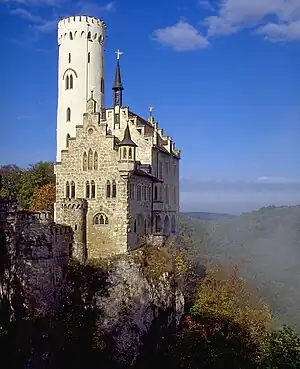

_von_Nicola_Perscheid.jpg.webp)


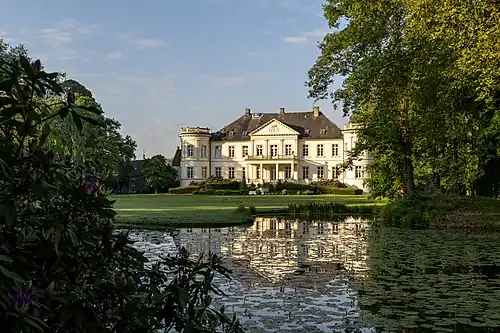


.jpg.webp)





.jpg.webp)




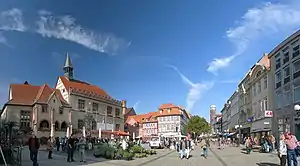

.jpg.webp)
